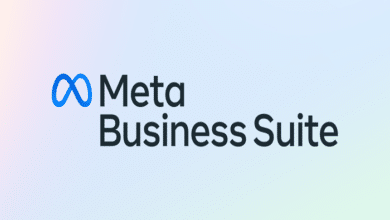TurfLibre: Revolutionizing Lawn Care with Sustainable Solutions

In an era where sustainability is paramount, TurfLibre emerges as a revolutionary concept in lawn care. Unlike traditional grass lawns, TurfLibre focuses on eco-friendly, low-maintenance alternatives that conserve water and support biodiversity. This blog post explores what TurfLibre is, its benefits, implementation techniques, and why it’s the future of landscaping.
What Is TurfLibre?
TurfLibre is a sustainable landscaping movement that replaces conventional grass lawns with drought-resistant, native plants, and ground covers. The term translates to “free turf,” emphasizing liberation from high-maintenance, water-guzzling lawns. TurfLibre promotes ecological balance while reducing the need for mowing, fertilizers, and pesticides.
The Environmental Impact of Traditional Lawns
Traditional lawns consume vast amounts of water, require chemical treatments, and contribute to habitat loss. TurfLibre challenges this norm by introducing alternatives like clover, moss, and native grasses. These options reduce water usage by up to 70%, making TurfLibre a key player in sustainable landscaping.
Benefits of TurfLibre
Switching to TurfLibre offers numerous advantages:
- Water Conservation – Drought-resistant plants need minimal irrigation.
- Low Maintenance – No frequent mowing or chemical treatments.
- Biodiversity Support – Native plants attract pollinators like bees and butterflies.
- Cost Savings – Reduced water bills and landscaping expenses.
Popular TurfLibre Alternatives
Several plants align with the TurfLibre philosophy:
- Clover Lawns – Soft, green, and nitrogen-fixing.
- Moss Gardens – Thrives in shade and requires no mowing.
- Native Grasses – Adapted to local climates, needing little care.
- Creeping Thyme – Fragrant, durable, and pollinator-friendly.
How to Transition to TurfLibre
Converting a traditional lawn to TurfLibre involves:
- Soil Testing – Determine the best plants for your region.
- Removing Existing Grass – Use sheet mulching or solarization.
- Planting Alternatives – Choose drought-resistant species.
- Minimal Watering – Establish plants, then reduce irrigation.
TurfLibre in Urban Landscaping
Cities are adopting TurfLibre in public parks, roadside greenery, and residential areas. Municipalities save on water costs while enhancing urban biodiversity. TurfLibre also reduces heat islands, making cities cooler and more sustainable.
TurfLibre vs. Artificial Turf
While artificial turf eliminates mowing, it lacks ecological benefits. TurfLibre, on the other hand, supports living ecosystems, improves soil health, and doesn’t contribute to plastic waste. For true sustainability, TurfLibre is the superior choice.
Success Stories of TurfLibre Adoption
Homeowners and businesses worldwide are embracing TurfLibre:
- A California family reduced water usage by 60% with a clover lawn.
- A Barcelona park replaced grass with native plants, cutting maintenance costs.
These examples prove TurfLibre is both practical and impactful.
Challenges and Misconceptions
Some believe TurfLibre looks “wild” or “unkept,” but with proper design, it can be aesthetically pleasing. Others worry about initial effort, but long-term benefits outweigh the setup. Education is key to overcoming resistance to TurfLibre.
The Future of TurfLibre
As climate change intensifies, water scarcity will drive more people toward TurfLibre. Governments may incentivize sustainable lawns, accelerating adoption. TurfLibre isn’t just a trend—it’s the future of responsible landscaping.
Conclusion
TurfLibre is transforming how we view lawns, prioritizing sustainability over outdated norms. By adopting TurfLibre, homeowners and communities can conserve water, support wildlife, and reduce maintenance burdens. The movement is growing, proving that beautiful lawns don’t have to cost the Earth.
FAQs
1. What does TurfLibre mean?
TurfLibre means “free turf” and refers to sustainable, low-maintenance lawn alternatives.
2. Is TurfLibre more expensive than a traditional lawn?
Initially, there may be costs for soil prep and plants, but TurfLibre saves money long-term by reducing water and maintenance.
3. Can TurfLibre survive in all climates?
Yes! TurfLibre uses region-specific plants, making it adaptable to deserts, temperate zones, and wet climates.
4. Does TurfLibre attract pests?
Native plants in TurfLibre landscapes often repel pests naturally, unlike monoculture lawns that need pesticides.
5. How do I start a TurfLibre lawn?
Begin by researching native plants, testing your soil, and gradually replacing grass with TurfLibre-approved species.




